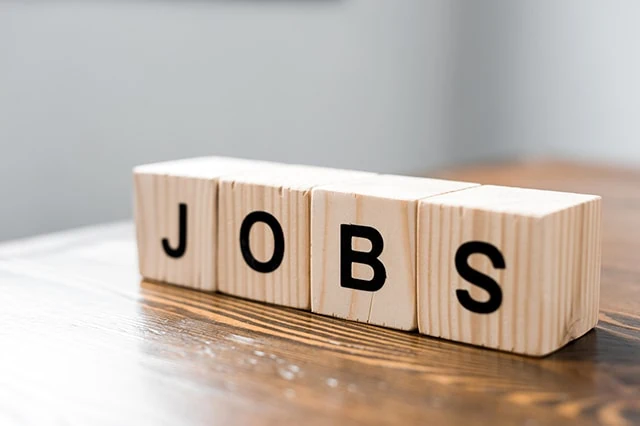America’s employment situation remained strong yet again in June, with the latest nonfarm payrolls report from the Labor Department showing better job growth than expected.
But it wasn’t a whopper of a report, either, with unemployment ticking higher and wage growth holding steady. That left economists and market strategists mixed about what the latest data says about when the Federal Reserve will begin cutting its benchmark interest rate.
The Labor Department reported Friday that nonfarm payrolls grew by 206,000 in June, squeaking by economists’ estimates for 200,000. Figures for the past couple of months were revised substantially lower: The new number for May payrolls was 218,000, down from 272,000 previously (-54,000 jobs), while April payrolls were revised lower to 108,000, from 165,000 previously (-57,000).

Despite the slight beat in job growth, however, June’s unemployment rate crept higher yet again, to 4.1% from 4.0% in May. Remember: May marked the end of a 27-month streak of sub-4% unemployment.
The 10 Best Index Funds You Can Buy
Here’s a brief look at the jobs report’s most pertinent details, which illustrate a still-roaring employment environment.
- June payrolls: +206,000 (vs. +200,000 est.)
- June unemployment: 4.1% (vs. 4.0% est.)
- June hourly earnings: +0.3% (vs. +0.3% est.)
- May payrolls (revised): +218,000 (vs. +272,000 previously)
- April payrolls (revised): +108,000 (vs. +165,000 previously)
“Despite downward revisions in previous reports regarding the number of new hires, job growth continues to beat expectations,” says Joe Gaffoglio, President, Mutual of America Capital Management. “Given this continued strength, we don’t expect the Federal Reserve to consider cutting rates until at least November, especially since inflation, while easing, is still sticky above the Fed’s 2% target level.”
That said, the market was still largely betting on a September rate cut. “Swaps for the Fed’s meeting in September are steady and show 18bps of a quarter-point cut priced, or odds of 72%,” Bloomberg Rates Reporter Michael MacKenzie said in a report.
Digging deeper into the June jobs report …
Health care had another strong month at 49,000 jobs added, though that was lower than the 64,000 jobs gained in the sector, on average, over the past 12 months. Social assistance gained 34,000 jobs, well above the 22,000 monthly average, and construction added 27,000 jobs to easily top its 20,000 average monthly jobs gain.
Temporary help services employment plunged by 49,000 jobs, marking a decline of 515,000 jobs since the sector’s peak in March 2022. Employment in professional services was off by 17,000 jobs, and retailers lost 9,000 jobs.
The 13 Best Mutual Funds You Can Buy
Expert Reactions to June’s Jobs Report
Here’s what strategists, financial managers, and other experts had to say about the June employment situation:
Jeff Schulze, Head of Economic and Market Strategy, ClearBridge Investments
“The June jobs report further cements that the labor market is nearing equilibrium. This will further push the Fed to be more attentive to potential downside risks on the full employment side of the dual mandate than they have been over the past few years.
“Just as one cool inflation print does not make a trend, neither does this one softer jobs report. However, the combination of this morning’s data along with a grinding trend higher in jobless claims should bolster the case for the Fed to kick-off the long-awaited rate cutting cycle in September, which remains our base case. Today’s release should provide support for risk assets as Treasury yields across the curve are likely to see pressure despite thin holiday trading, as markets remain firmly in a ‘bad news is good news’ environment.”
Jack McIntyre, Portfolio Manager, Brandywine Global
“In the hierarchy of economic data, labor market statistics have become the most important statistic. Yes, even more than inflation. Not just in my view, but more importantly, the Fed has this view too, based by the shift in their rhetoric.
“This was not a strong employment report when you remove government hiring, and it solidifies the odds the Fed starts cutting rates in September. It is not indicative of an imminent recession but supports the soft-landing view (recessions are preceded by soft landings). The sharp decline in temporary help may portend future weakness in the labor market this summer. This clearly increases the Fed’s confidence level that policy rates are too restrictive, and they need to cut. It is also taking longer for folks to find a new job which might be a sign of future weakness in employment is in the offing.”
The Best Dividend Stocks: 10 Pro-Grade Income Picks
Michael Reynolds, Vice President of Investment Strategy, Glenmede
“Though it may seem counterintuitive, a rising unemployment rate in this environment is less like deterioration and more like normalization. The unemployment rate reported right on consensus at 4.1% for June. That’s notably higher than the 3.7% level where it sat at the beginning of the year. However, it’s still well below the Fed’s latest estimate of the natural unemployment rate of 4.2%, which is one that describes a well-functioning and healthy economy. If the Fed is able to manufacture a soft landing, labor market normalization of this sort is likely to be one of the signs that it’s doing so successfully.
“This report likely doesn’t change the Fed’s calculus all that much. Theoretically, a labor market with its foot of the gas pedal should help on the inflation front, but more still needs to be seen to confirm that trajectory. All eyes will be on the June CPI report next Thursday, which will be closely watched for any signs that May’s benign inflation continued into the summer. The base case remains two rate cuts beginning later this year. Investors should circle the September FOMC meeting as the first truly ‘live’ meeting for rate cut considerations, but they should make sure to use a pencil with a good eraser in case inflation does not cooperate by then.”
Steve Rick, Chief Economist, TruStage
“This month we saw another stronger-than-expected jobs report, marking the forty third consecutive month of job growth in the United States. The labor market has been able to maintain its strength despite rate hikes and higher-than-normal inflation. Hopes for a soft landing, where the Fed is able to tame inflation and eventually cut interest rates while growth remains resilient, were reignited last month by encouraging inflation data and progress in tackling consumer prices. We remain optimistic that this potential soft landing will be possible without removing the strength from the labor market.
“While mildly tampered, inflation has yet to truly slow, leaving the Fed in an interest rate holding pattern and consumers pinching pennies. This dynamic has left shoppers increasingly frustrated and led to some pushback against retailers. Some have even introduced value prices to maintain demand.” “The Fed anticipates price resistance may spur the start of disinflation. Even still, we expect inflation will continue to bounce between 2% and 3%, eventually settling to the natural rate of 2% in 2025 and allowing personal income to rise again.”
Greg Wilensky, Head of US Fixed Income and Portfolio Manager, Janus Henderson Investors
“This report absolutely keeps the probability of a September rate cut on the table. This still seems like the most likely outcome. This keeps the upcoming inflation data in the driver’s seat for determining the timing of the first cut. This [nonfarm payrolls] data will neither cause the Fed to take a September cut off the table or force them to cut rates in September even if the inflation data does not continue to show moderation that we have seen recently.”
Joe Gaffoglio, President, Mutual of America Capital Management
“Wage growth remains robust at around 4%, which is welcome news for workers and consumers. However, inflationary pressures continue to erode that benefit. Even with higher wages, consumer purchasing power is getting squeezed because of a higher cost of living. In addition, the disparity between the number of job openings and available individuals for hire is lessening, indicating that workers may be losing some leverage over wages that they’ve enjoyed in recent years.
“Lower- and middle-class consumers will be the most impacted by a slowdown in wage growth and weakness in the job market, limiting their buying power from here. As inflation persists, we continue to closely monitor signs of consumer health, such as the recent weakening in consumer confidence and rise in credit card delinquencies.”







